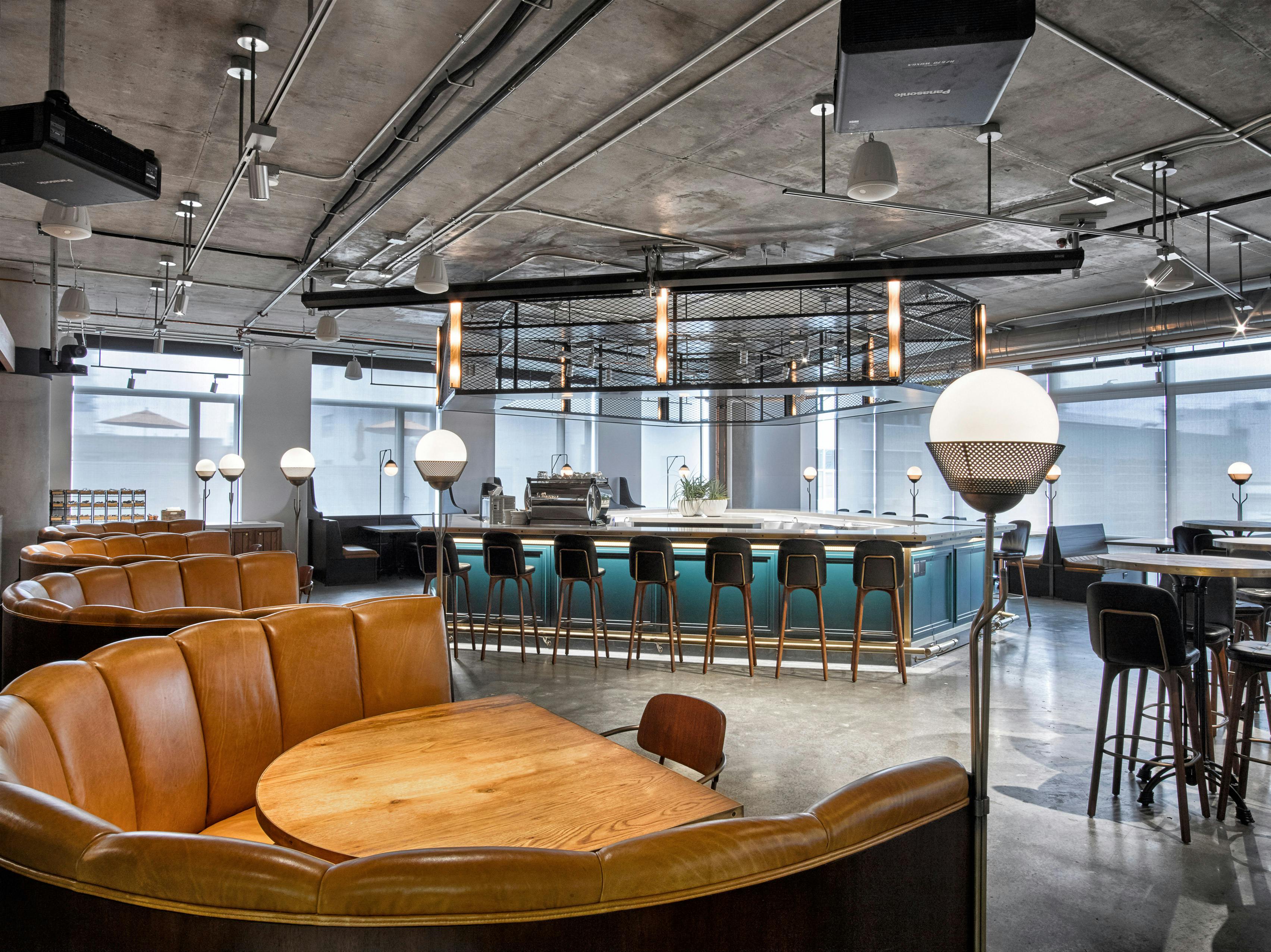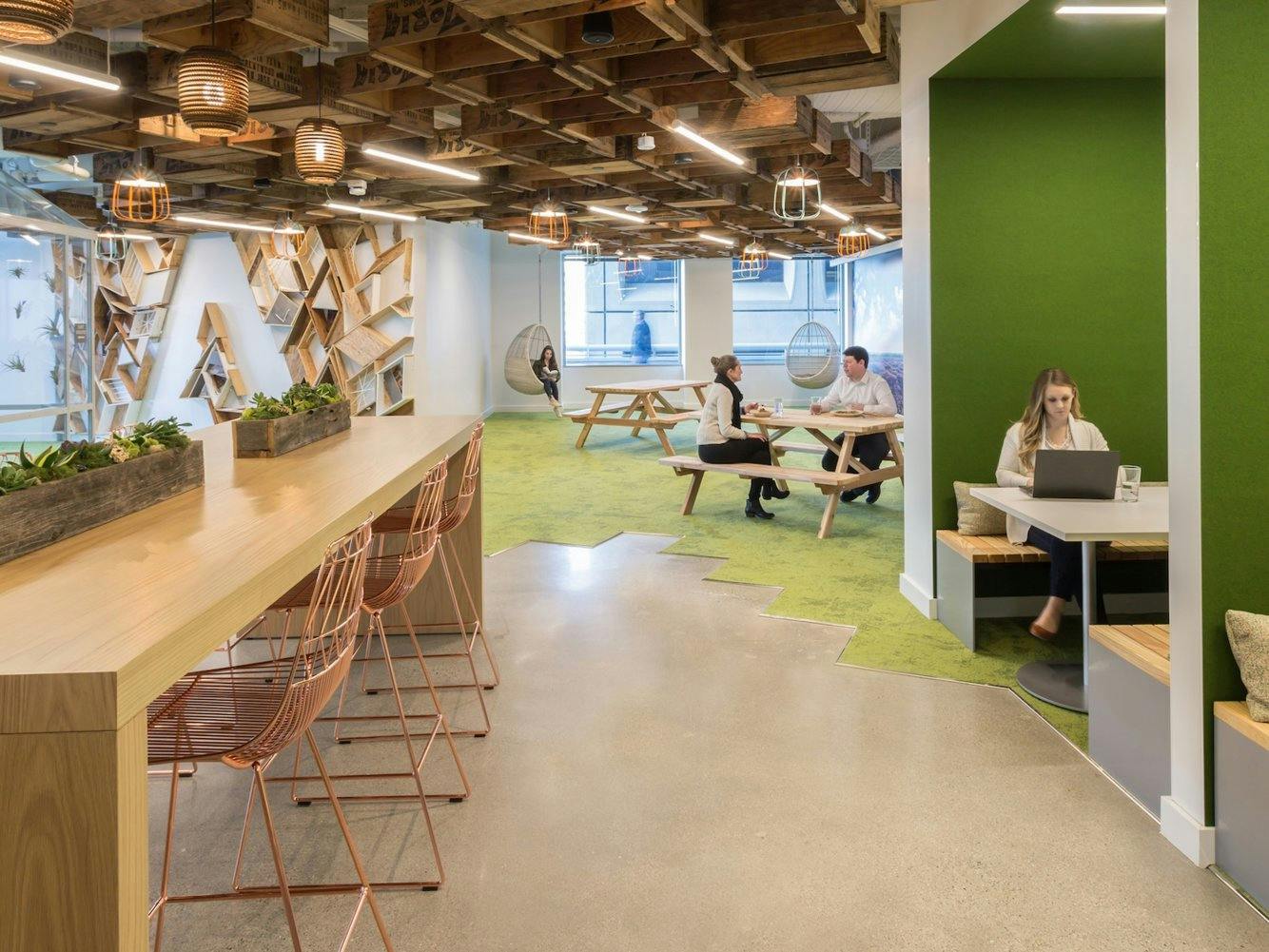Office Design: How to Instantly Make Your Workspace More Collaborative

The words “office space” may still cause you to envision old-school cubicles and sterile meeting rooms, but workplace design has come a long way in the last decade.
Rightfully so: Where a person works can have an impact on how happy, healthy, productive and inspired they are. Not only should each individual workstation be set up in a way that it’s ergonomically sound, but shared spaces should foster discussion and collaboration.
Jonathan Webb, VP of workplace strategy at KI, agrees “Plain and simple, office design is important because it empowers people to do quality work. Few people can be creative and productive when they're stuck at a desk from 9-to-5 — or even at an open workstation in a room full of colleagues with no privacy. When people can choose where and how to work, they're happier, more creative, and more productive.”
While Webb doesn’t believe that private cubicles are conducive to churning out great work, he cautions that a completely open office isn’t either.
“What works is a flexible workplace,” he expands. “By providing options for individual, focused work and for collaboration, workplaces can make it easier for employees to brainstorm and have impromptu interactions with their teammates. Even more, they provide spaces so projects that stem from these kinds of conversations are easier to do productively.”
Create intentional space for collaboration
Webb reiterates that this doesn’t mean you need to follow a model for a completely open office.
“Think about designing lounge areas, conference rooms with movable chairs and desks, workstations with extra seating and adjustable privacy screens, and other collaborative spaces that are good for working in teams without preventing nearby colleagues from honing in on private, focused work,” he suggests.
Dedicate space to “coffee talk”
Here’s a fun fact: Eighty percent of tech firms prioritize human interaction over electronic communication. Even more, 60 percent of their office spaces are devoted to collaborative meeting spaces, rather than nose-to-the-grindstone workstations.
Feel like your team is more inclined to send a message rather than to get up and talk, even if they’re just a few seats apart? Webb has a solution. “See to it that your office facilitates short face to face sessions so team members can easily express ideas or solutions.”
Whether it’s a designated small corner or a cafe, having a casual place to catch-up (as one would over coffee) can help fuel new ways of thinking and doing.

Encourage more movement
“Aim to create an office environment where people have to get up and walk around to fulfill their job functions,” Webb instructs.
“Make it happen with sit-stand desks, appealing staircases with lounges or a cafeteria nearby, or even a walking trail near the office. When people bump into each other, they collaborate more. And when people aren't stuck at their desks for eight hours straight, they're healthier and happier.”
Have access to a rooftop or outdoor area? Put it to good use — outdoor workspaces have been proven to lower stress and boost people’s moods, creating a more energetic, optimistic and collaborative workforce overall.
Keep personal workstations private
According to Webb, the key to creating a space that inspires collaboration is striking a balance between privacy and free-flowing conversation.
“When workers have the option of privacy to get focused work done without distractions, they'll engage more in collaborative work when it matters,” he shares. “If employees feel like they're in a fishbowl all the time or like they're constantly being distracted by others' conversations, they're more likely to plug in headphones and only use instant messages to communicate for the whole day.”
Adopt reconfigurable offices
Reconfigurable furniture is not only economical, but it’s versatile too. Webb list designing an adaptable office as one of the sure-fire ways companies can facilitate collaboration.
“Things like rolling seating and work surfaces, sit-stand desks, and adjustable privacy screens can help people move from group work to individual tasks in a moment’s notice,” he promises.

Keep active design top of mind
In the end, Webb says that incorporating aspects of something he calls “active design” may be all it takes to create a space that makes people want to share ideas and work together.
“Active design is the process of designing a space with inherent movement in mind,” he notes. “The pillars of active design — including adding varied workspaces, natural light, and outdoor workspaces to the office — encourage movement, wellness, and a healthy lifestyle. Employees who are moving around are more likely to bump into each other and perhaps even collaborate on the fly.”
.png)

.png)




